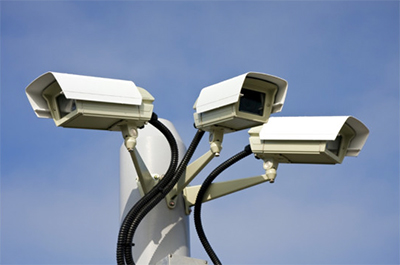
|
I am not a thing; I am a process. That, applied to all living organisms, should be the first rule of biology. I—and you, your dog, your begonia, the cows and corn we raise for food, and the mold that lives in our drains—we may all appear to be solid objects, have substance, and react in many ways to physical forces (like, for instance, the accelerations of gravity). But all living beings are processes before we are things.
Why is this important? Because it will change the way we think about our own bodies and other creatures.
Take, for example, physical corrections like orthopedic appliances and procedures, or the orthodontic teeth-straightening that most of us endured as teenagers. All of these procedures are a fix for “right now,” for what ails us at this moment. But in the span of seventy, eighty, ninety years of life, the body inevitably changes. The new mechanical knee you had implanted at age sixty may not work as well at eighty because your bones are constantly reacting to physical stresses—strengthening webs of calcium here, hollowing out spaces there—and that new knee simply alters the stress points.
Or, in my case, where I began a process of tooth alignment with those “invisible” braces in my late sixties.1 I had one tooth on the left side of my lower jaw that had loosened because the teeth across the center of my mouth were collapsing inward, and one of them had actually taken a full step back behind the other three. That and a misalignment on my right side between the upper and lower jaws, where some teeth were not actually engaged, told my dentist (and so me) that in a few years I would start losing teeth. It wouldn’t be bad oral hygiene or gum disease—which is so often the case in tooth loss—but simply a lack of the bite pressure that keeps the bony socket firm in supporting each individual tooth. Teeth left hanging with no engagement from their opposite number eventually loosen and fall out. Two and a half years of realignment have fixed this problem—at least for now.
What I learned from the dentist is that the teeth in your mouth are always moving around and adjusting. So the perfectly straight teeth you acquired as a kid with your parents’ orthodontics bill will probably be snaggly and uneven again by the time you’re sixty. This is called living. It’s a process.
Take, for example, the issue of tattoos and how they change over time. Most people think that the artist injects the ink under the skin and it just stays there, like the pigments that the plaster layer absorbs in those medieval frescoes. But the reality is that ink, or any foreign object injected into the body, is first highly mobile and second considered an invasion by the body’s defenses. When the ink is injected, white blood cells called phages rush to the skin’s deeper layers and consume it. That is their purpose, to capture dead matter and dispose of it by allowing themselves to be processed into waste in the liver. But these cells become so engorged with the ink, which is plentiful in their surroundings, that they are trapped in place below the skin’s surface. This is why the tattoo artist advises you to keep the site covered, clean, and moisturized: you are protecting not only the surface punctures but the deeper “infection” to which these phages are responding and attempting to heal.
All cells have a lifespan, however, and when one phage dies in place, another enters to consume it and the ink it carried. This keeps the tattoo pattern in place, more or less. However, as the artist who did my two tattoos2 advised, over time the design will spread out on a millimeter scale—that’s the jostling of the phage cells as they consume one another and their loads of ink. And the tattoo will also fade—that’s the bits of ink that some of the phages get to carry away for disposal, along with the sun’s UV rays fading the ink itself. The process is ongoing for as long as you live. Nothing on or in the body is permanent.
And take, for example, the concept of beaming people across inconvenient distances in Star Trek. As I’ve written elsewhere,3 it does not matter how fast you decompose—that is, burn up—the human body to access and address each atom and molecule, nor how fast your computer takes in and correlates all this data, nor how big your “transporter buffer” may be. All that mapping of atoms and molecules, no matter how accurate, is still going to be ineffective.
The human body is not a thing but a process. Not only do these molecules move around inside the liquid medium of the cells; many of those molecules are also in a constant state of reaction: enzymes breaking larger molecules apart, or putting smaller molecules together, or copying strands of DNA for replication, or the hundred other processes that constitute life on a cellular level. In each of the thirty-odd trillion cells of the human body, hundreds of these reactions are taking place all at the same time. If the transport computer mistakes the direction of any number of these reactions, or interferes to the point of changing them, or causes the replication of a DNA strand to change, it will flood the body with poisons and mutations just as surely as a large dose of ionizing radiation. You might transport a brick from place to place, or even a ham sandwich without much harmful effect. But a living organism would be at great peril.
Our bodies and those of every living organism are constantly changing, growing, reacting, and also—just a bit—dying. This is what it means to be alive.
1. I never had orthodontia as a child. My parents didn’t think it was necessary, and I wasn’t vain about my appearance. Also, I had heard friends talk about the pain involved in the process and the inconvenience of chewing and brushing around the wires, and so I was thankful to be spared all that.
2. On the back of my right wrist I have a large semicolon, about an inch long. This is a commemoration and a warning about depression and suicide. On the back of my left wrist, for balance, I have a Welsh dragon, about an inch and a half square. Unlike the design shown on the flag of Wales, where the dragon is mostly a solid form with incidental lines, mine is more of an open design of loops and curls, taken from the website of the Devolved Government of Wales. The artist said this design would be easier to show as a tattoo, and it would not spread into an ugly red blotch over time. Why at all the Welsh dragon? Because that’s part of my heritage, and my late wife always loved dragons, that being her sign in the Chinese zodiac.
3. See Transporter Beaming from August 21, 2010.

